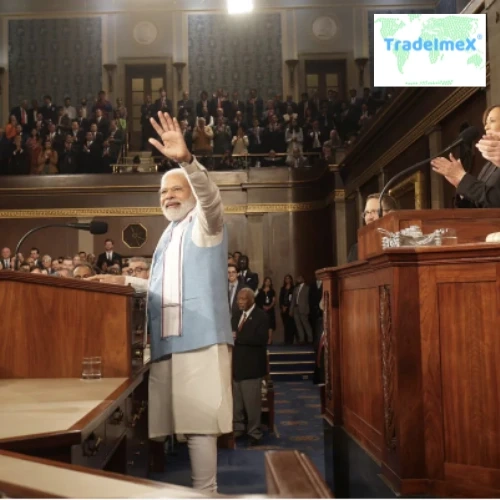From June 21 to 24, Prime Minister Narendra Modi will be in the US at the invitation of President Joe Biden and First Lady Jill Biden. Since Biden took office at the beginning of the year, Modi is making his first trip to the US. The visit is intended to highlight the warm bonds of family and friendship" that unite the two nations and to strengthen the defense, trade, and technological relations.
As an example of India's soft power, Modi will also preside over celebrations for the International Day of Yoga on Wednesday at the UN's New York headquarters. The next day, he will address Congress—a privilege usually reserved for close US allies—and attend an opulent state banquet given by Biden, showing just how important Modi has grown to the US as a strategic ally.
India, which the US views as a crucial ally in efforts to restrict China's ascent, is a country with whom the US wants closer ties. Nearby Asian nations including the Philippines, Vietnam, Japan, and India are concerned about China's expanding military might and aggressive territorial claims. Along with Australia and Japan, the US and India are members of the Quad, a coalition of four democracies working to promote an open and free Indo-Pacific.
Trade is one of the main areas where the US and India cooperate. The US's ninth-largest commercial partner is India, and vice versa, with a bilateral trade relationship between the two nations worth around $150 billion. India's main export market is the US, which will receive around 16% of all exports from India in 2020.
According to US Trade Data , there are some obstacles and chances for both parties to improve their trading relations. Particularly in industries like agriculture, e-commerce, digital services, and intellectual property rights, the US has been pressing for expanded market access for its products and services in India. India has been requesting a reduction in US steel and aluminum tariffs as well as the restoration of its Generalised System of Preferences (GSP) program preferential trade status, which the Trump administration terminated in 2019.
A comprehensive trade deal that would address these problems and open new prospects for both firms and consumers has also been voiced as a goal by both parties. However, because of disparities in objectives and sensibilities, discussions have been slow and difficult. It seems unlikely that a trade agreement will be revealed during Modi's visit, but the two presidents might reiterate their commitment to carrying on the conversation and resolving unresolved issues.
Data on exports and imports is another area of collaboration between the US and India. Data on cross-border movements of products and services, such as quantity, value, origin, destination, tariff classification, and method of transportation, is referred to as export-import data. Data on exports and imports can be used by both businesses and governments to better understand trade patterns, spot opportunities, track compliance, enact laws, and facilitate commerce.
Under several bilateral and multilateral agreements, including the Customs Mutual Assistance Agreement (CMAA), the Container Security Initiative (CSI), and the Trade Facilitation Agreement (TFA) of the World Trade Organisation (WTO), the US and India have been exchanging export-import data. Transparency, security, and efficiency of cross-border commerce flows are all goals of these accords.
The export-import data between the US and India can yet be further enhanced and harmonized. For instance, both nations could adopt similar formats and standards for data collection and exchange, such as the World Customs Organisation (WCO) Data Model or the United Nations Trade Data Elements Directory (UNTDED). Both nations might benefit from utilizing cutting-edge technology like blockchain, AI, and big data analytics to enhance the reliability, timeliness, and quality of export-import data.
Data on exports and imports will be a major topic of conversation during Modi and Biden's meeting, not just a buzzword. The two leaders may investigate methods to improve their exchange and analysis of export-import data, which might be advantageous for both nations in terms of trade facilitation, compliance, security, and competitiveness.
A key turning point in the bilateral relations between the two nations is Modi's visit to the US. It is also a chance for both parties to address some of the issues and take advantage of some of the forthcoming opportunities in their trade partnership. Both leaders may create the foundation for a future trade partnership that is more robust and mutually advantageous by concentrating on the facts and key concepts like export-import data.
Contact Tradeimex right away to access more Global Trade data from more than 70 countries and gain access to the most reliable and accurate datasets.
MAIL ID: info@tradeimex.in
Source URL: https://www.atoallinks.com/2023/pm-narendra-modis-us-visit-and-its-effect-on-export-import-of-both-nations/


